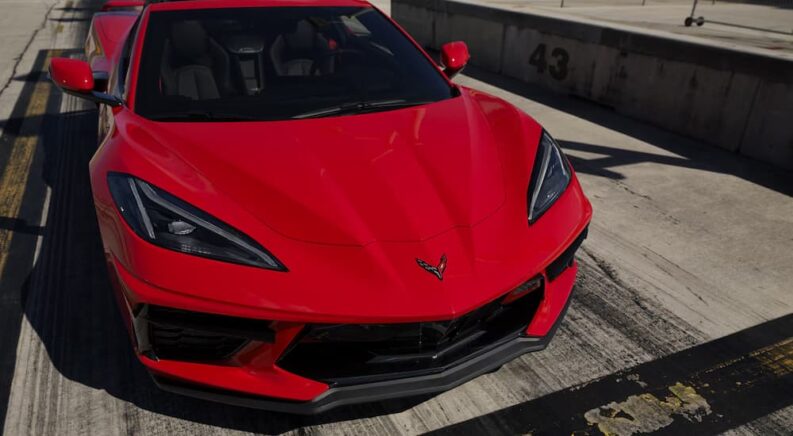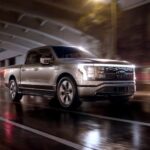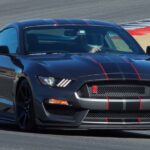There’s no strict set of regulations that separate a supercar from the average high-performance model, but like any work of art, you know it when you see it. If we were to lay down some basic guidelines, we would say that a modern supercar needs to be able to offer a top speed of over 200 mph, sprint from zero to 60 mph in less than three seconds, and provide at least 500 horsepower, though 1,000 is quickly becoming the new norm thanks to the advent of electrification. Twin-turbocharged or even supercharged engines are commonplace, as are low-slung, sporty designs that improve aerodynamics and allow the car to cut through the air like a hot knife through butter. Tight, responsive handling and braking systems are a must, delivering the sort of dynamic control that creates a truly one-of-a-kind driving experience. These qualities might make supercars an impractical choice as a daily driver, especially if you plan on bringing along more than one passenger or toting any cargo larger than a small duffle bag, but it’s a small price to pay for the sort of automotive antics a supercar can enable. Let’s look at the current state of the American supercar market, learn how they compare with some of their European rivals, and see how the segment has evolved since the first true American supercars were introduced in the early 1990s.
Fangs for the Memories
There’s a lot of debate around which model truly represents America’s first homegrown supercar. While some trace the category’s lineage back to the original 1962 Shelby Cobra, purists would point out that the car’s UK-sourced AC Ace chassis would disqualify it from the conversation. The original Chevy Corvette, Mustang, Camaro, and Pontiac GTO were all released around the same time, and while they do represent some of their era’s finest examples of high-performance automotive engineering, it takes a little more to qualify as a supercar.
There are plenty of contenders for the title of “First American Supercar,” but realistically, it’s pretty easy to narrow the field down to just two options. Debuting in 1989, the little-known Vector W8 would be the first true American supercar of the modern era. The coupé was graced with a 6.0L Rodeck engine, a modified GM Turbo-Hydramatic 425 three-speed automatic transmission, and two intercooled Garrett turbochargers that allowed the W8 to churn out 625 hp and 649 lb-ft of torque while boasting a top speed of 242 mph and a zero-to-60-mph time of 3.9 seconds. Most importantly, it looked every bit like a supercar, with the same wedge-shaped design that was clearly inspired by European supercar forerunners such as Lamborghini. All in all, this seems like a pretty compelling package, so why are we reluctant to recognize it as the first true American supercar? It really comes down to a matter of volume. The W8 might have quite the resume, but the supercar had a tragically short run, with only 17 customer units produced over four years.
The W8’s limited availability leaves just enough wiggle room for the Dodge Viper to enter the conversation. Originally released in 1991, the Viper makes a pretty compelling case for itself and encapsulates everything there is to love about the modern supercar. Outfitted with an 8.0L V10 engine, a distinctive design, and a name inspired by the original Shelby Cobra, the Viper brought supercar performance to the masses. With 400 hp and a 4.2-second zero-to-60-mph time to its name, the Viper lacked the W8’s pure speed but made up for it in some important ways. Dodge eschewed the Lamborghini-inspired wedge shape for a curvy, fluid design that immediately publicized the model’s supercar credentials, but it actually had more in common with the storied performance brand than one might think.
Dodge and Lamborghini were actually under the same Chrysler corporate umbrella during the early 1990s, which allowed Viper engineers to tap their Italian counterparts for a little help with the Viper’s engine. While based on the Chrysler LA V8, the Viper V10 owes a clear debt of gratitude to those speed demons of Sant’Agata Bolognese. The car’s lightweight design and advanced V10 engine meant the Viper weighed in at just 3,300 lbs, giving it a power-to-weight ratio that made it one of the fastest cars of the ‘90s and earned it a 7:01 lap time at the famed Nürburgring. The 1999 ACR version would up the power to a rubber-burning 645 hp and help to cement the Viper legend in the annals of American automotive history.
The original Viper was a relatively barebones affair, with no air conditioning, exterior door handles, or key slots, but it did make some concessions to comfort with leather-trimmed sport bucket seats and a premium sound system that, while thoughtful, probably had its work cut out for it when it came to competing with the roar of the V10. With an inflation-adjusted MSRP of $90,000, the 1991 Viper offered a relatively more affordable alternative to its European supercar rivals while still largely keeping pace in terms of performance. Most importantly, the Viper and the W8 proved that the category wasn’t the exclusive purview of brands like Aston Martin, McLaren, Lamborghini, and Bugatti and set the stage for a new era of American innovation that is still going strong to this day.
Modern American Supercar Brands
While the Vector and Viper have gone the way of the dodo, there are a few American brands that follow in their footsteps, building supercars with American iron. Let’s take a closer look at them.
SCG
When you want to make it in the niche supercar market, it’s important to settle on a name that invokes a healthy amount of automotive heritage. Scuderia Cameron Glickenhaus (SCG) might sound like some sort of Italian-German outfit, but the supercar manufacturer is actually based out of Sleepy Hollow, New York. Founded by filmmaker, entrepreneur, and car collector James Glickenhaus in 2004, SCG was initially focused on modifying existing Ferrari models to compete in endurance races like the Nürburgring 24 Hours. SCG’s first homegrown creation hit the market in 2024 in the form of the SCG 003, which was offered in both racing and road-faring variants. The 003 was not only heavily based on the Ferrari P4/5 but was also largely produced in Italy by Torino’s Manifattura Automobili Torino (MAT). Outfitted with a mid-mounted V8 that pumps out 650 hp, the 003 also features a central driving position that immediately distinguishes it as a true supercar.
SGC followed the 003 with the 004, which is offered in Street, Competition, and Street Competition versions that all come packed with a potent 6.2L V8. The brand’s latest creation is the 007, a sports prototype car built specifically for the World Endurance Championship’s (WEC) Le Mans Supercar category that might even have James Bond pumping the brakes. The 007 logged a podium finish for the 2021 and 2022 WEC seasons, cementing the brand’s reputation as a bonafide contender in the supercar market. SCG also offered one model that’s a relative rarity in the high-end market: a midsize off-road vehicle with a supercharged 6.2L V8 dubbed the SCG Boot.
Hennessey
No matter how you define the term supercar, the Hennessey Venom F5 is sure to fit the bill. Designed with a 6.6L twin-turbocharged V8 that delivers 1,792 hp and almost 1,200 lb-ft of torque, the Venom F5 can speed from zero to 60 mph in just 2.6 seconds and boasts a top speed of 272 mph. That’s not only the second-best time amongst American supercar brands, it also makes the Venom F5 the fifth fastest production car in the world, with Hennessey’s flagship model besting such notable names as Koenigsegg and Bugatti. Retailing for around $1.3 million, the Venom F5 is no small investment, but it’s almost a bargain when you consider that it offers more power than Bugatti’s Veyron while weighing in at just under 3,000 lbs. That sort of power-to-weight ratio will surely make for an edge-of-your-seat driving experience, but it’s all in a day’s work for Texas-based Hennessey.
Originally founded in 1991 as a high-performance tuning company known for such models as the Dodge Viper-based Venom 650R and the Lotus Exige-inspired Venom GT, Hennessey has ushered in a new era of American supercar performance with its first in-house creation in the Venom F5. The company hopes to make the F5 the world’s fastest production car in the near future, setting its sights on the vaunted 311 mph benchmark. In the meantime, they’re more than happy to supplement the supercar with some unhinged tuning creations like the VelociRaptor off-road SUV (a modified Ford SVT Raptor), the Exorcist (a high-performance package for the already performance-minded Chevy Camaro ZL1), and the Hennessey CTS-V, a 1,000-hp version of Cadillac’s luxury sedan.
SSC
Before you get too excited, no, Shelby SuperCars Inc. (SSC) has nothing to do with the legendary American driver, engineer, and father of the Shelby Cobra, Carroll Shelby. Based out of Richland, Washington, SSC has been producing eye-catching supercars since 2004, when it debuted the SSC Ultimate Aero. Initially equipped with a supercharged V8 lifted from a Chevrolet Corvette C5-R, the Ultimate Aero briefly became the world’s fastest production car in 2007 after SSC replaced the supercharger with a twin-turbo setup that produced 1,287 hp. This twin-turbo design has continued to bring a lot of notoriety to the SSC brand, first in the 1,300-hp Ultimate Aero XT and now in the 1,350-hp Tuatara. Named after a speedy New Zealand reptile, the Tuatara can produce as much as 1,750 hp when filled with ethanol. Created in collaboration with automotive designer Jason Castriota, the Tuatara might be the fastest production car in the world, but it’s a matter of some debate. SSC claims to have set a new record with a top speed of 331.1 mph in 2020, but not everyone is buying it (though one Tuatara owner posted an independently verified 282.9 mph in 2021). The Tuatara is currently listed as the second-fastest production car on the market, but SSC still has its eyes set on the crown with hopes of hitting the 300 mph mark in the near future.
Rezvani
Founded by Ferris Rezvani in 2013, California-based Rezvani Motors is best known for the Beast, a mid-engine, V8-powered supercar originally based on the Ariel Atom that weighs just 1,650 lbs thanks to its carbon fiber body. The beast embraces some cutting-edge production techniques, including 3D printing to create the molds for the car’s carbon fiber panels as well as lights, mirrors, and other exterior elements. Rezvani followed up with the 700 hp Beast X, a street-legal supercar with a 2.5-second zero-to-60-mph time and a price tag of over $300,000. The second-generation 2024 model upped the ante with a Corvette C8-based platform and a 6.2L V8 capable of making 1,000 hp. The new Beast is much heavier than the original at 2,960 lbs and only gets heavier when adding the optional armor package that incorporates body armor and bulletproof glass into the mix. This sort of reinforcement might seem odd for a supercar, but it’s all a part of the Rezvani approach. The brand has become known for producing apocalypse-ready automotive creations that would rule the road if a “Mad Max” scenario were to break out, a trend best exemplified by the brand’s Tank Extreme Utility Vehicle (XUV). The Tank, which comes with a 1,000-hp HEMI V8, bulletproof ballistics armor, electric shock door handles, underside explosive protection, run-flat tires, a thermal night vision system, and even a smoke screen that allows every driver to feel like they’re part of her majesty’s secret service.
Saleen
Saleen Automotive, Inc. is one of the long-running brands on our list, producing a unique breed of American-built supercars since the 1980s. Founded by former professional race car driver Steve Saleen, the company earned its stripes with an impressive win at the 24 Hours of Mosport in Ontario, Canada. Saleen parlayed this success into a new performance parts division, unveiled the S351, and even formed a short-lived race team with comedian Tim Allen. The company would really start to garner some serious attention in 2000 when the Saleen S7 was unveiled. The S7’s 7.0L V8 was rated for up to 750 hp when paired with the optional twin turbochargers and could reach up to 250 mph with a zero-to-60 mph time well under three seconds. The mid-engine supercar quickly notched four GT championships and set new records at the famous 24 Hours of Le Mans.
This notoriety allowed Saleen to forge a close relationship with Ford, and the company was soon picked to be the official assembly and paint contractor for the Blue Oval Brand’s own supercar, the Ford GT. Saleen built a new $15 million facility in Michigan to churn out the GT and was recognized for its aesthetic prowess when it was chosen as the exclusive paint contractor for the Dodge Viper in 2007. Saleen has continued to partner with Ford on the Saleen 302 Mustang, while the Saleen S1 represents its new in-house flagship. A Saleen-designed, 450-hp 2.5L turbocharged I-4 engine might not reach the same heights as the S7, but the mid-engine car is still a popular choice amongst those familiar with the American supercar segment.
Ford and Chevy
No rundown of the American supercar scene would be complete without mentioning the high-performance efforts of the country’s two marquee brands. The Ford GT40 is an undeniable icon of the European endurance racing scene, and the GT carried on that proud tradition with all the modern tech and innovations that define the supercar segment until it was discontinued in 2022. Chevy has also thrown its hat into the ring with the eighth-generation Corvette, which swapped to a mid-engine design that makes all the difference when trying to compete against some of the segment’s established players. The base model might not qualify as a supercar, but the ZR1 variant has everything it needs to edge into the conversation with a supercharged 5.5L V8 capable of producing 1,064 hp and posting a top speed of 233 mph.
A Great Time to Buy American
How do American supercars compare with some of their established European rivals? While the Europeans once had a clear edge, that gap is quickly closing, with American-made supercars taking two of the top five spots when comparing the world’s fastest production models. The SSC Tuatara, Hennessey Venom F5, and Chevy Corvette ZR1 prove there’s nothing inherently superior about long-standing European supercar brands like Bugatti, Aston Martin, Pagani, and McLaren aside from having a few more years under their belt. If there’s one advantage to these European brands aside from their foreign mystique, it would have to be their increased emphasis on handling. While American supercars are prone to excel in raw power, European brands have a slight edge when it comes to those subtle engineering touches that make a huge difference when you’re rounding a corner or navigating through a tight chicane. American supercars are often designed to be a little more accessible with an increased focus on automatic transmission, but they also tend to carry a lower price tag than many European offerings. At the end of the day, it’s up to each driver to decide what sort of attributes they value when shopping for a supercar. If you’re in the market for a domestic driving experience, there’s never been a better time to buy American.




